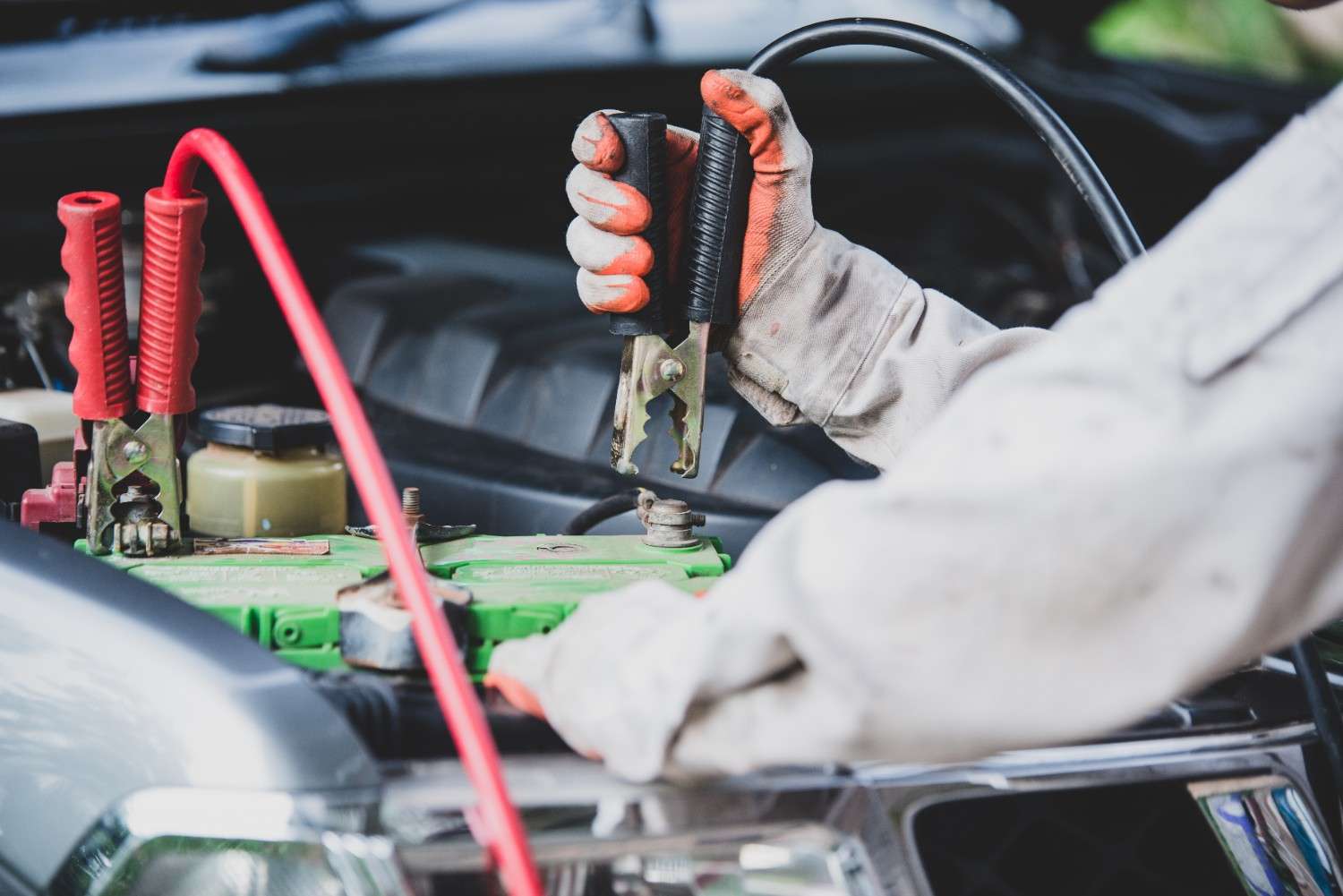I still remember the first time my car battery died—parked outside the hardware store, arms full of lightbulbs, in ninety-degree heat, sweating more from panic than the sun.
I popped the hood like I knew what I was doing (spoiler: I didn’t) and stared at the cables like they were snakes.
That’s when a kind stranger asked, “Want a hand, or are you just blessing the engine?” That moment taught me I definitely needed to learn how to jump a battery.
So if you’re stuck with a dead car and a set of jumper cables you barely recognize, don’t worry—you’re not alone, and you’re definitely not helpless. We’re going to make this simple, safe, and maybe even a little fun.
What’s the Right Way to Jump a Battery Without Messing It Up?
First things first: jumping a battery is totally doable. You don’t need to be a mechanic or wear a jumpsuit with your name on it (though that’d be cool). What you do need is a pair of working jumper cables, a functioning vehicle, and a basic understanding of what goes where.
Here’s what’s really happening: your dead battery just needs a boost of electrical energy from a working one. By linking the two with cables—red for positive, black for negative—you create a bridge. But like any bridge, if you build it wrong, stuff falls apart.
That’s why order and placement matter. A little spark is normal, but a big one? Not great. We’ll talk more about the correct sequence below, but the biggest takeaway here is don’t skip the grounding step. It keeps things safer and helps prevent nasty surprises.
How Do You Jump Start a Dead Battery Without Calling a Tow Truck?
You can absolutely jump start your own car—and no, you don’t need to be a roadside superhero. If your lights are dim or not working, your engine clicks but doesn’t start, or there’s total silence when you turn the key, your battery’s likely the culprit.
Here’s the process, plain and simple:
Park the working car close (but not touching), turn both cars off, and grab your cables. You’re creating a temporary energy handshake, so the cars need to be stable and not rolling away mid-jump.
Make sure nothing’s leaking or corroded—no white fuzzies on the terminals or weird smells. A little grime is okay, but battery acid? That’s a no-go. Once you’re in the clear, it’s time to connect the clamps in the right order (and we’ll get into that in a minute).
After a few minutes of connection and a bit of patience, your car should roar back to life. If it doesn’t, you might need a new battery—or your alternator’s trying to ghost you. Either way, one jump start attempt is safe. Three failed tries? It’s time to phone a pro.
What Is the Correct Order to Jump Start a Car Battery?
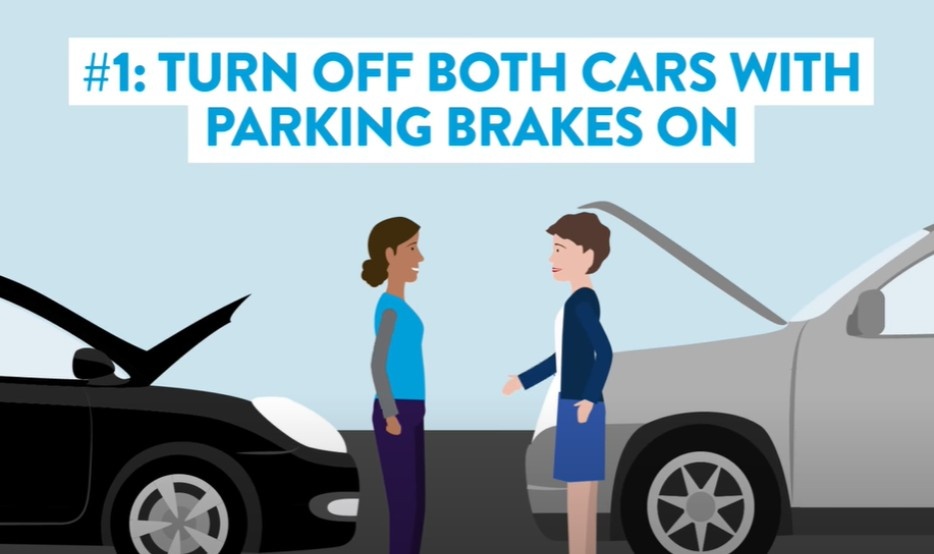
Image source- GEICO Insurance
Ah, the magic sequence. This is where most people (including my past self) fumble. Getting the clamp order right is the difference between success and a mini firework show under your hood.
Here’s what you do:
First, attach the red (positive) clamp to the dead car’s positive terminal.
Second, connect the other red clamp to the working car’s positive terminal.
Third, place the black (negative) clamp on the working car’s negative terminal.
Last, connect the remaining black clamp to a grounded metal surface on the dead car, like an unpainted bolt or part of the engine block. Never directly to the negative terminal.
This final connection is often missed, but it helps prevent sparking near the battery, which can release hydrogen gas and cause a pop. That’s science, folks—and the reason we follow the rules.
Which Battery Terminal to Connect First When Jumping?
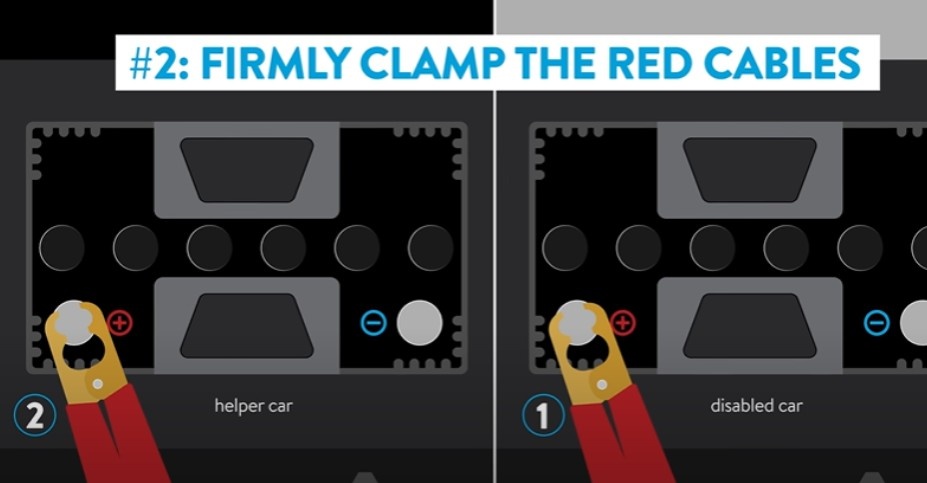
Image source- GEICO Insurance
Let’s keep this short and sweet: positive first, always.
Why? Because connecting the positive clamp first reduces the chance of accidental short-circuiting. If your wrench or clamp touches the car’s body (which is grounded) while you’re connecting the negative side first, it can complete a circuit and spark.
So: red clamp to the positive terminal of the dead battery first, then the live one. Only after that do you touch the black clamps—and even then, the second black clamp should never go on the dead battery’s negative terminal. Ground it to a metal surface instead.
Trust me, your eyebrows will thank you.
Do You Hook Up Red or Black First?
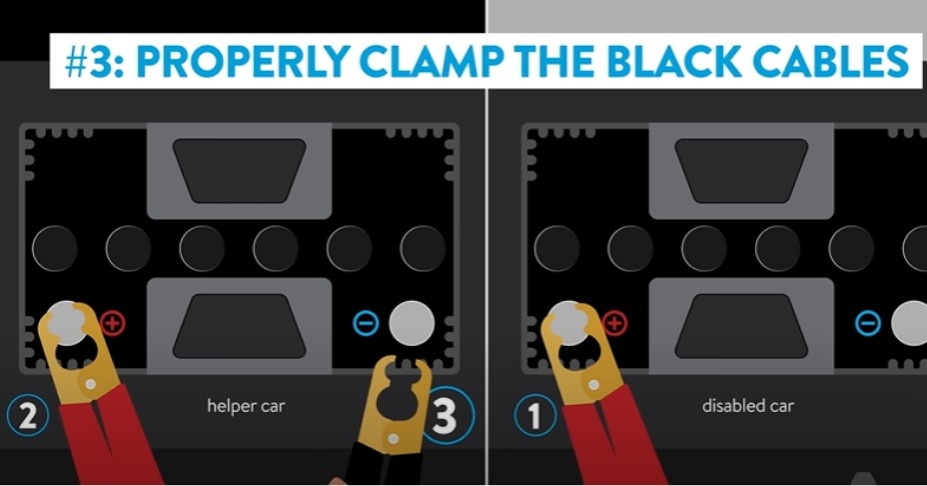
Image source- GEICO Insurance
This one’s a popular Google search for a reason: it matters more than you think.
Red is positive, black is negative.
You hook up red first, because the positive side is less likely to cause a spark when connected before the ground.
It goes like this:
- Red to dead battery.
- Red to good battery.
- Black to good battery.
- Black to unpainted metal on the dead car.
Once everything’s connected and the dead car is running again, take off the cables in reverse order. That means black from the grounded metal first, and red from the dead car last.
How to Make the Most of How to Jump a Battery?
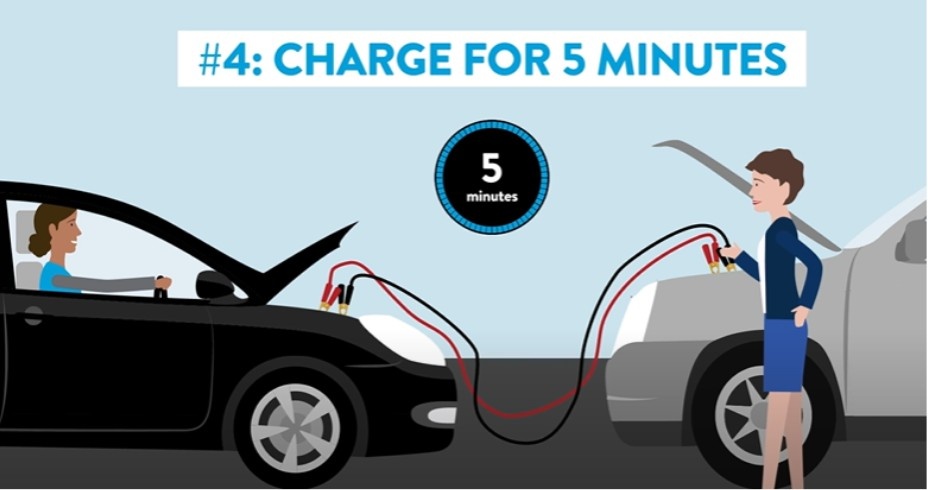
Image source- GEICO Insurance
Now that you know the basics, let’s talk finesse.
After the dead car starts, don’t just peel out of there like it’s a Fast & Furious reboot. Let the engine run for at least 5 to 10 minutes—or better yet, drive it around. This gives the alternator time to charge the battery a bit.
Still sluggish afterward? Your battery may not be holding a charge. You can stop by most auto parts stores for a free battery health test. It’s fast and way better than getting stranded again in rush hour with melting groceries in the trunk.
Also, invest in a portable jump starter. These little lifesavers are basically battery packs with built-in jumper cables. No need to flag someone down. I keep one in my glove box, right next to my emergency chocolate stash.
FAQs About Jump Starting a Battery
1. Can I jump start a car in the rain?
Yes! Modern vehicles are insulated enough to handle rain. Just avoid standing in puddles or letting the clamps touch wet metal parts unnecessarily. Safety first—but don’t let drizzle stop you.
2. Why is my car still dead after a jump?
It could be a deeper issue. Maybe the battery’s completely toast, or the alternator isn’t charging it properly. If you’ve done the process correctly and still nothing, it’s worth getting a full battery system test.
3. Can I use any car to jump mine?
Generally yes, as long as both are 12V systems. Don’t use an electric or hybrid car to jump a regular one (or vice versa) without checking the manual—some models aren’t designed for that.
4. Is it bad to jump start too often?
Frequent jumps are a sign something’s wrong. Either your battery is dying, or your alternator isn’t charging it. Jumping is safe when done right, but it’s not a long-term fix.
Final Scoop Before You Jump In
Jumping a battery doesn’t have to feel like defusing a bomb. With the right steps—and a little confidence—you can handle it like a total pro. I’ve been there in sandals and sunglasses, looking like a mess but pulling it off.
Here’s my final tip: practice before you need it. Pop your hood, find the terminals, locate a grounding spot. That way, when life throws you a dead battery in the middle of nowhere (or the Target parking lot), you’ll know exactly what to do.
And hey, next time someone’s stuck, you might be the stranger who saves the day. Jumper cables in hand, ready with a smile and just enough sass to make safety look cool.

